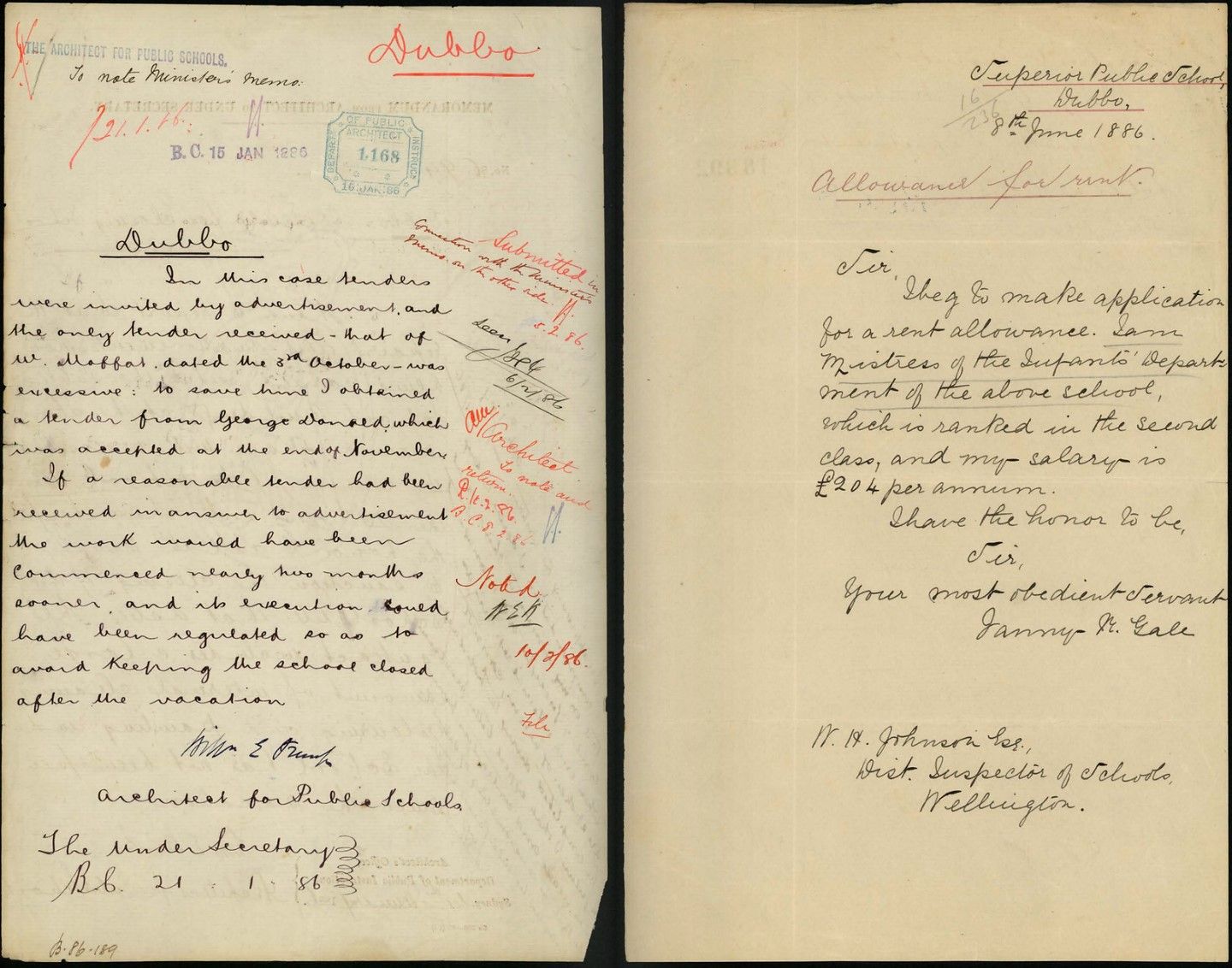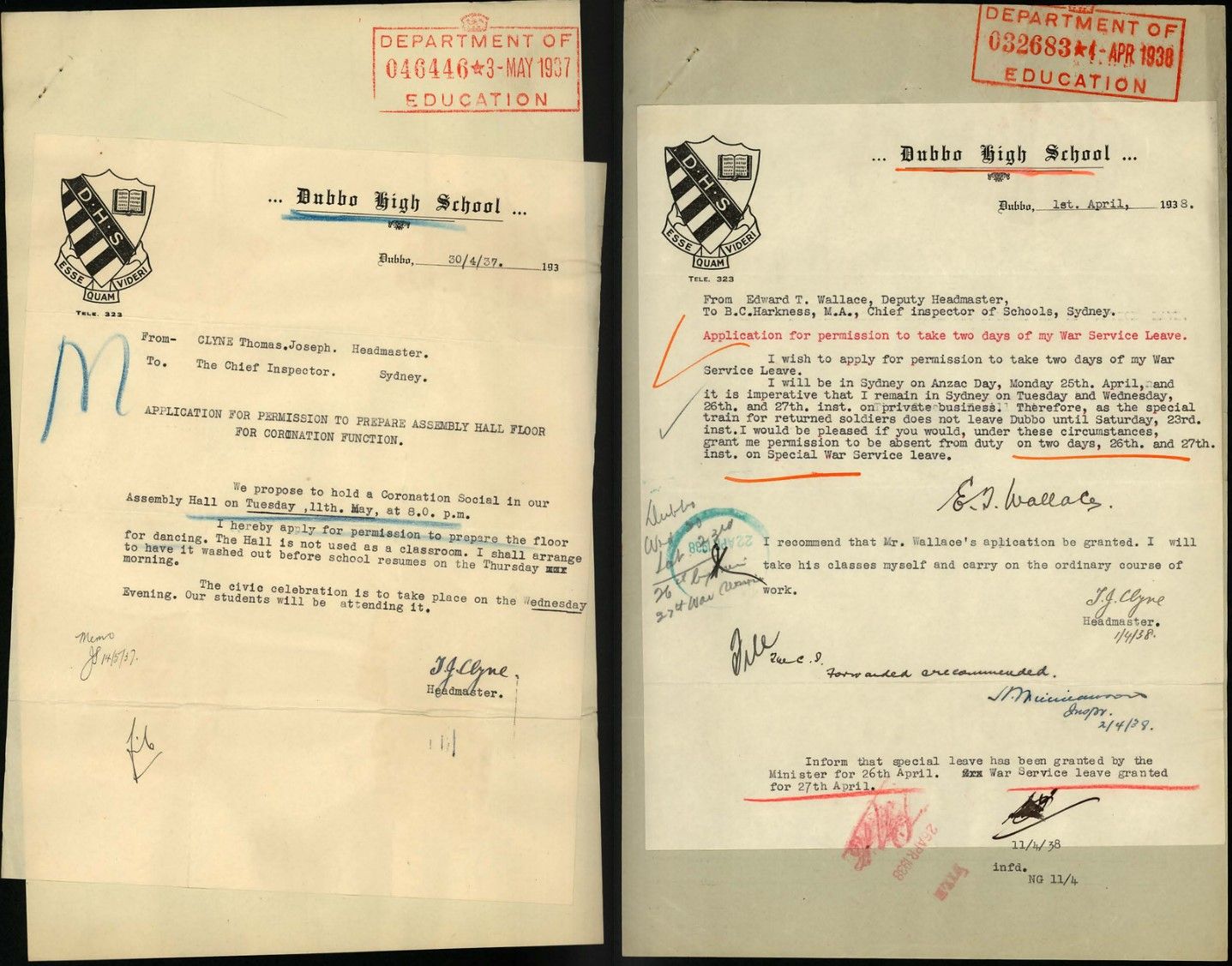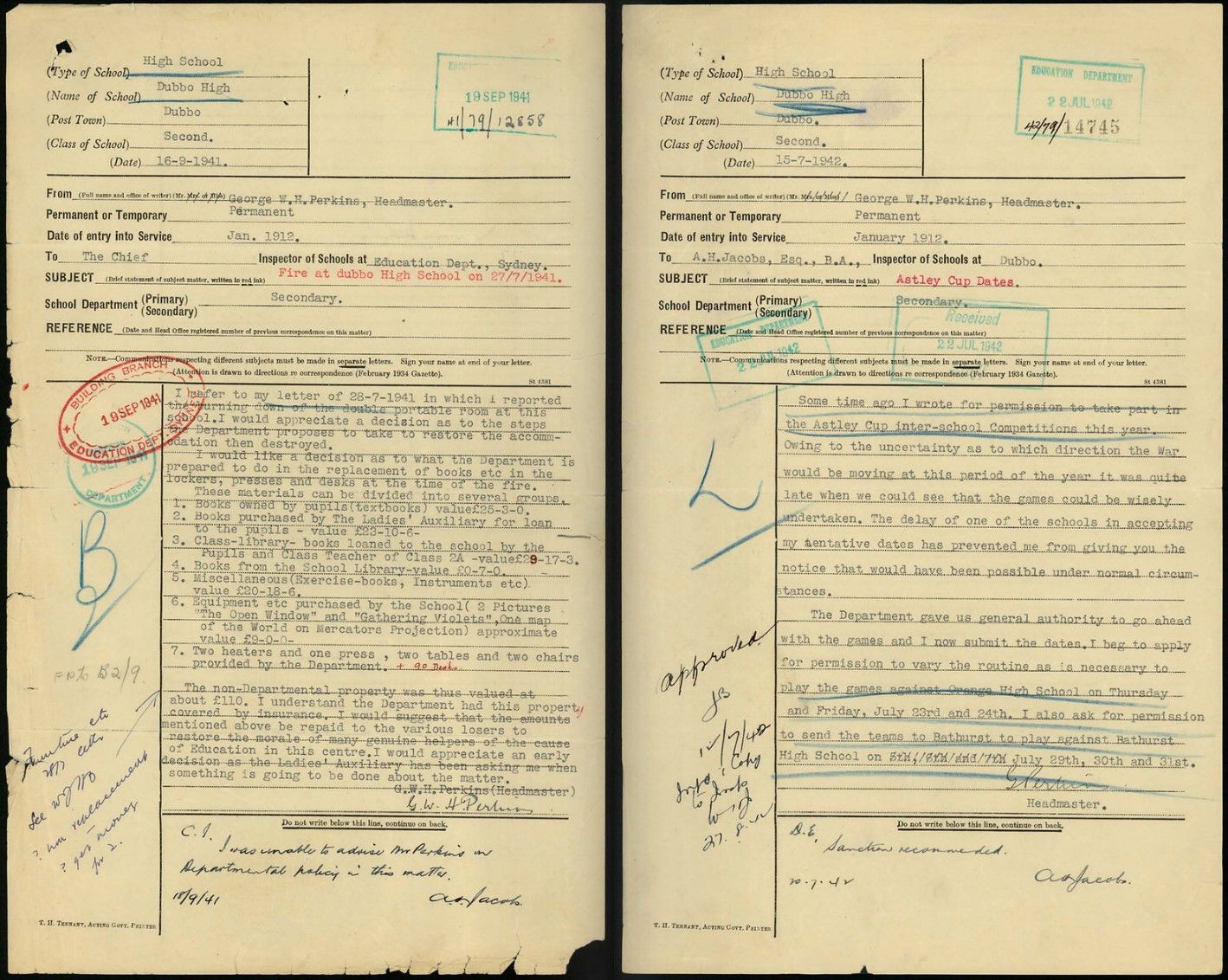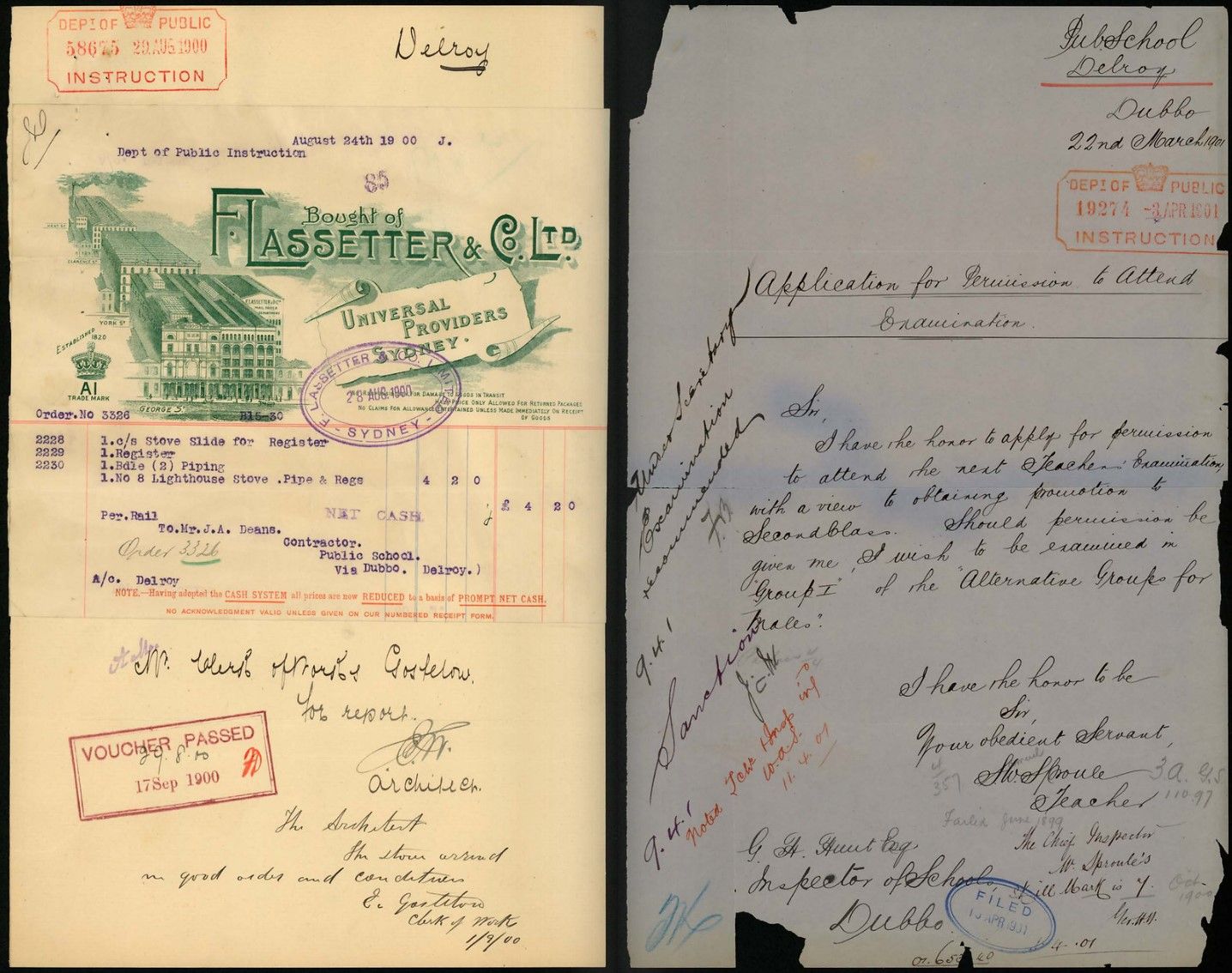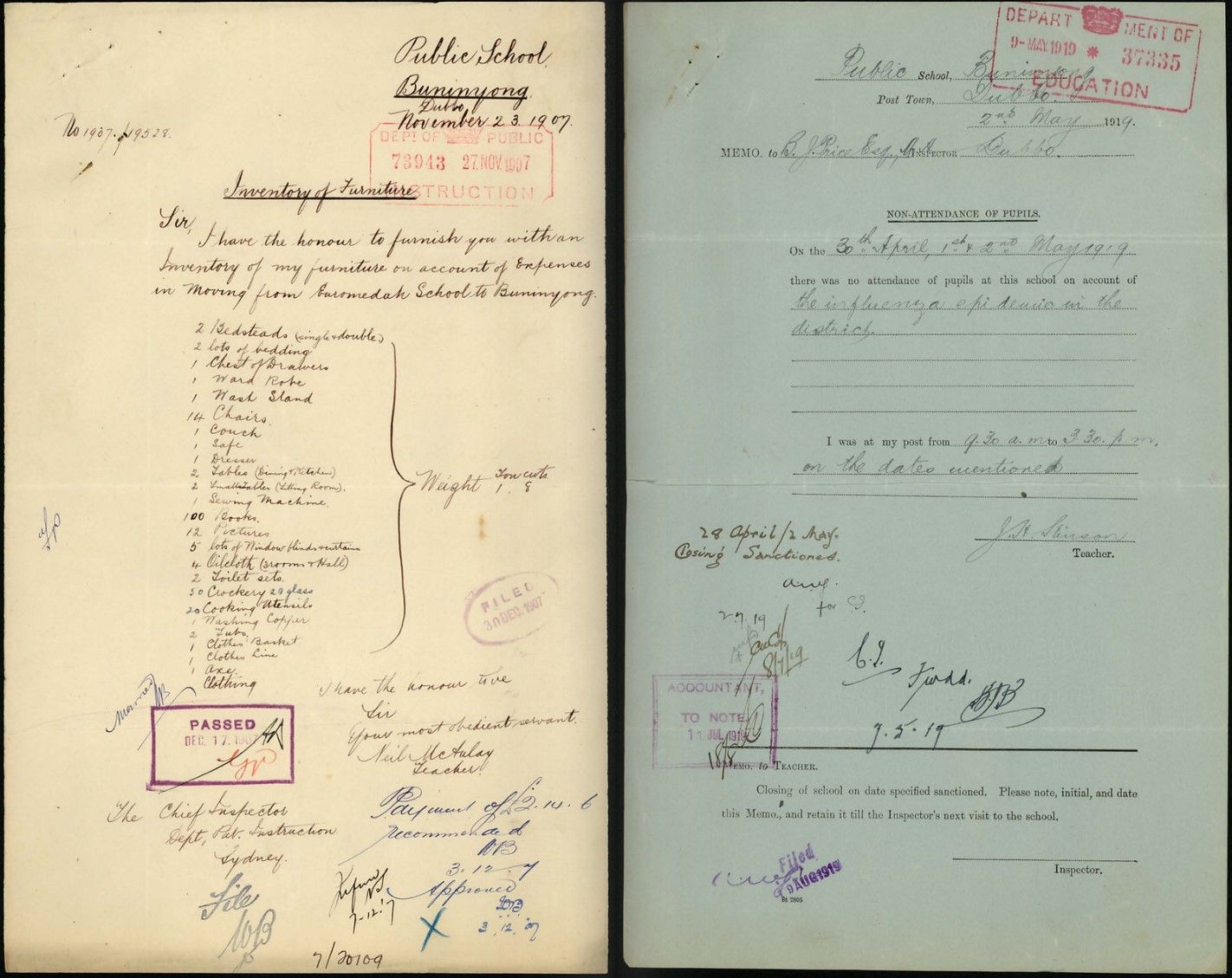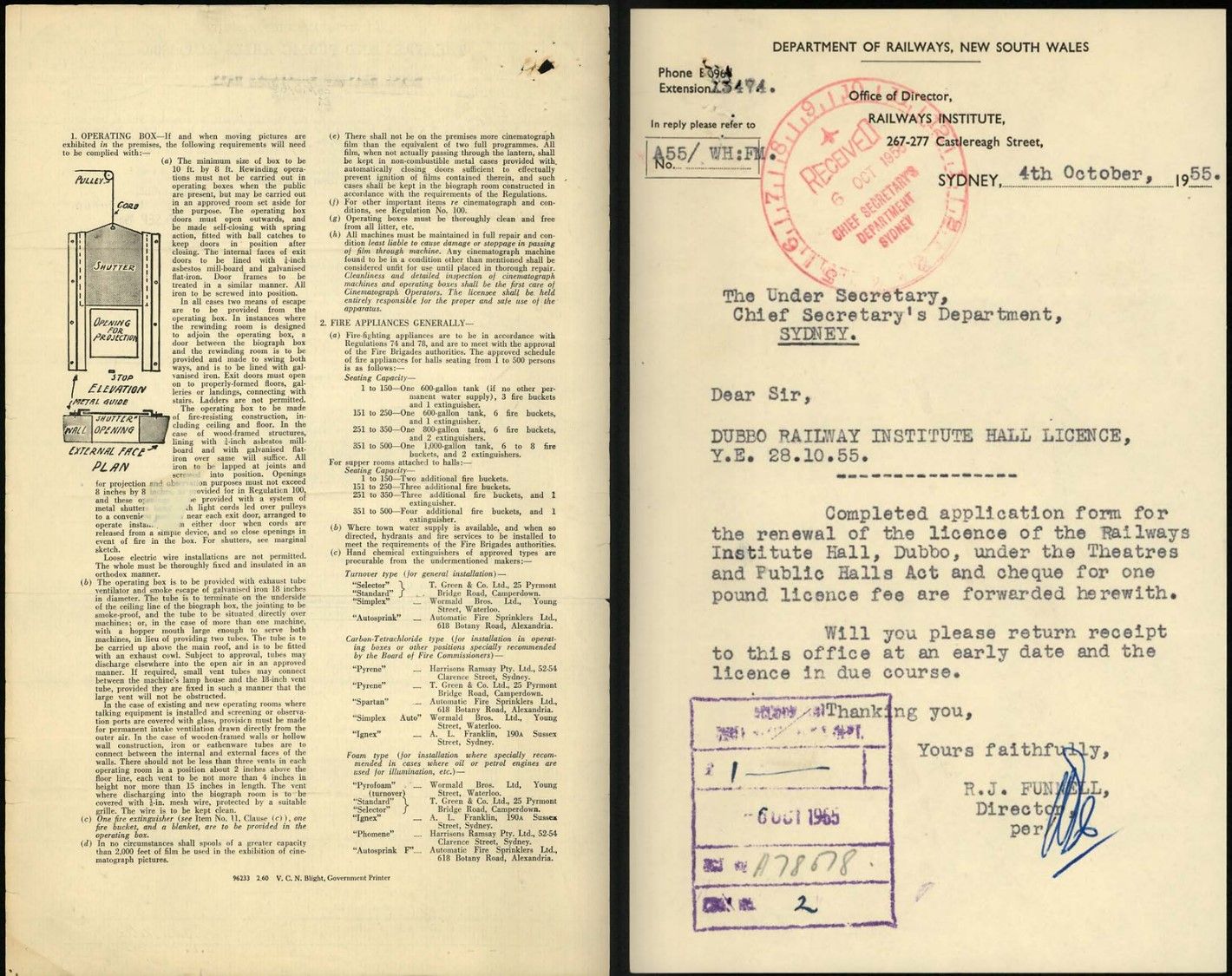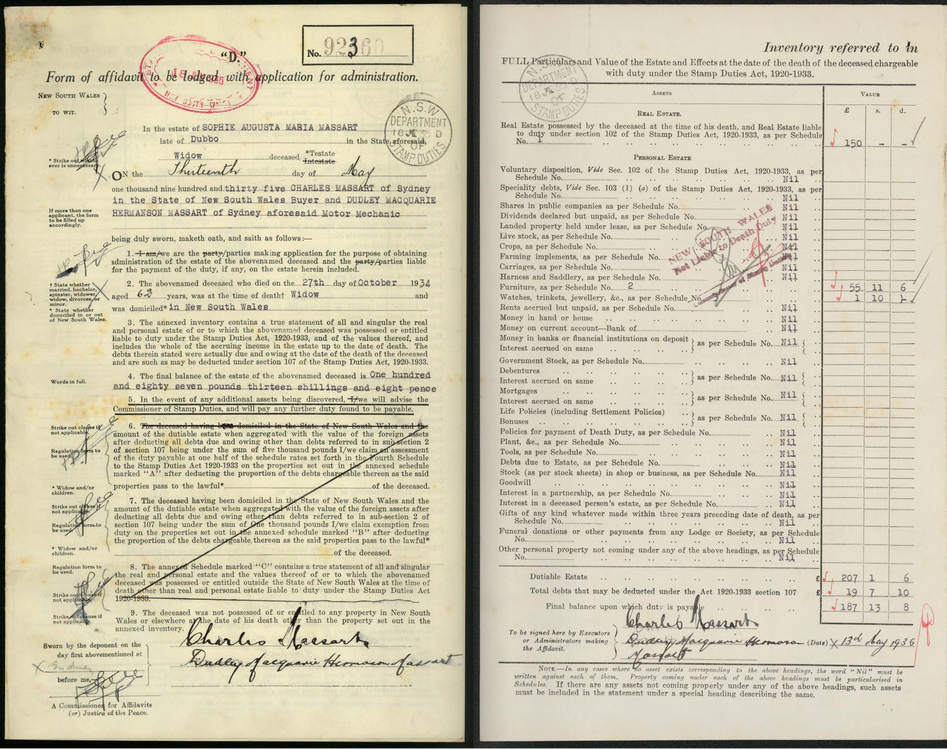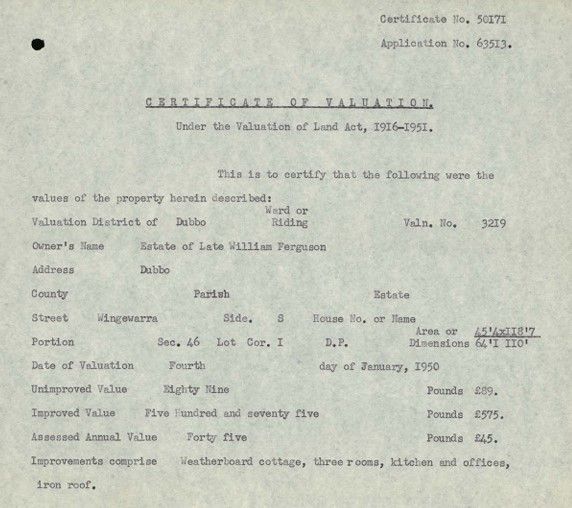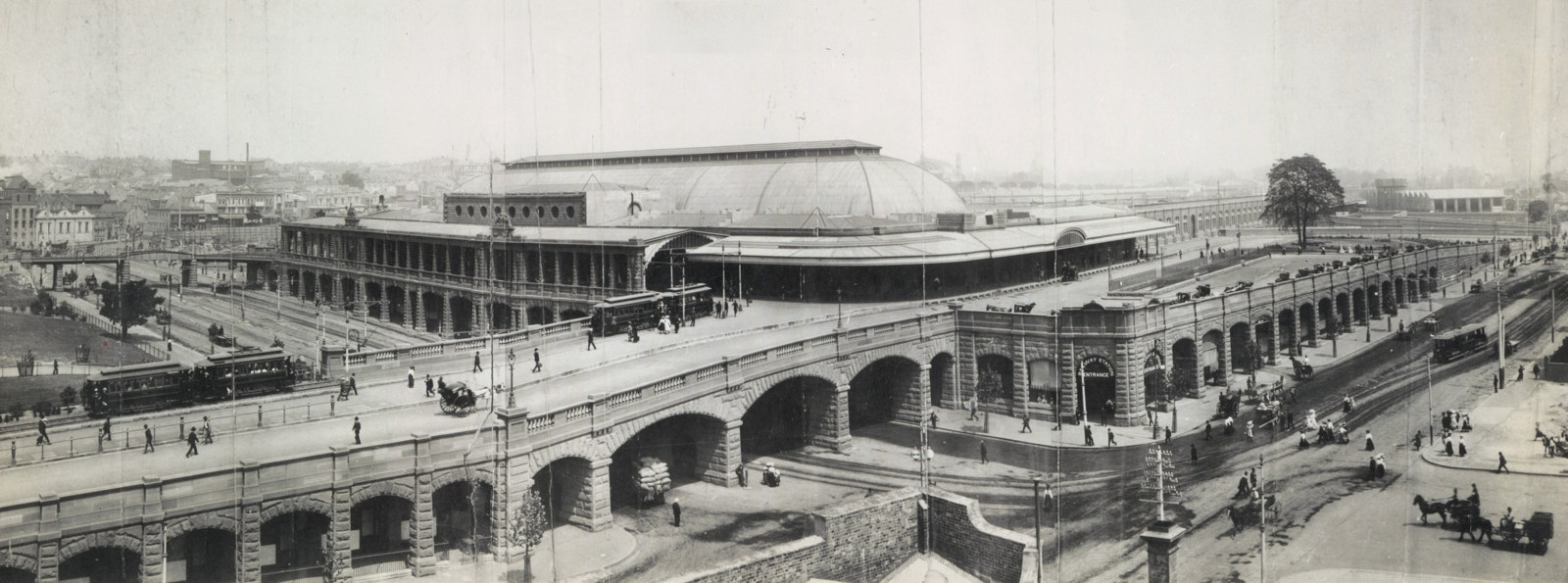Dubbo
Archives in your town – a virtual tour
As part of our Archives on Tour initiative we conducted a virtual tour of some of the archives that highlight key moments and people from Dubbo's past. Take a tour of some of the featured archives below.
Watch the recording of the virtual event and come behind the scenes
1:17:04
3:48
1:54
4:39
3:32
School Files, 1876-1979
[NRS-3829]
What can they tell you about your town?
There are similarities between all of the school files through content and purpose. They reflect their times. The files cover both wars but particularly reflect the many impacts of World War 1. Women resign or are terminated when they marry as married women were barred from public sector employment. Schools very strongly reflect the growth or decline of towns.
Dubbo’s School files
The school files show the commencement and growth of the government school system from the first Dubbo school in 1858 which later became Dubbo Public School. It offered secondary schooling until Dubbo High School was established in 1917. While Dubbo Public School continued on, smaller schools outside Dubbo were established, changed names, changed type of school, prospered and over time closed as communities changed and transport improved. More public schools started in Dubbo in the 20th century including Dubbo South, Dubbo North and Dubbo West reflecting Dubbo’s growth from the 1940s.
New public school buildings were constantly needed as populations increased and as schools were lost to fire. The need was met by school tents in the 1880s, shelter sheds and rooms in the houses. Overcrowding was noted in newspaper articles that ended up in the school files. Tents were insecure when heavy rain softened the ground.
Schools closed for repairs and for the Poultry and Horticultural Society Show and more seriously for measles and the 1919 influenza pandemic; participated in Arbor Day activities, held school concerts and celebrated the coronation of George VI among other school and town activities.
Teachers enlisted during World War 1 and on return took up teaching again and received war pensions and War Service leave. Teachers requested leave to be with dying family members and when ill; applied for rent allowances and reimbursement of travelling expenses; carried out agricultural trials and repaired school residences.
20th century increases in population saw local members making representations on the schools’ behalf for more buildings and for local builders to do the work; requests for canteens and from land owners to work with them in deciding how to gain more land for overcrowded schools. Dubbo High School contested and also won the Astley Cup – an annual triangular contest with Orange and Bathurst High Schools that started in the 1920s. Hostels to provide accommodation for students from outside Dubbo and from the Far West operated.
Extracts from the files
Plans of public buildings
[NRS-4335]
The Colonial Architect started in 1832 and continued on as the Government Architect to the end of the 20th century. The public buildings serve a variety of purposes including Land Board offices; pilot stations and light houses in coastal areas; schools; hospitals; police stations; gaols; court houses; and even post offices from before postal services became a Federal Government responsibility. All of these buildings are often large and enduring even if their purpose changes over time.
Plans of Dubbo buildings
Dubbo Public School was extended a number of times. This plan, dated 6 December 1895, shows additions and improvements.
Dubbo Gaol was also altered over time.In 1878 a range of additions and alterations were planned.
Theatres and public halls files, 1895-1992
[NRS-15318]
Theatres and public halls had to be licensed from 1895. The licensing and regulations related to public safety. The theatres and public halls were owned by private individuals, businesses, religious organisations, community groups and councils and they were used for many purposes – dances; social gatherings; showing movies; live entertainment and skating (roller and ice). The files provide information about local businesses – both in relation to theatres and public halls and the construction industry. Theatres and public halls are a large part of recreation in any town. The rise and fall of these buildings chart changes in population and in the broader world of recreation.
The Railway Institute Hall
The Railway Institute Hall in Talbragar Street was opened in 1929 with a “smoke social”. Serving as a hall for the Railway Institute it was also used for many community purposes. It was a large simple room and could seat 300 people. The hall was licenced until 1981.
Bankruptcy, 1888-1929
[NRS-13658]
Bankruptcy is a state in which a person is unable to pay creditors and is required to undergo a legal process that usually results in liquidation of his/her estate in order to meet expenses (at least in part). If a person is declared to be a bankrupt then he/she cannot operate a business for profit, enter a business contract or borrow money. It is similar, but not identical to insolvency.
There are Insolvency files from 1842 to 1887 and from 1930 bankruptcy became a Federal government matter.
Bankruptcy files contain lists of creditors that the bankrupt person owed money to and debtors that owed money to the bankrupt person. Through these lists they show commercial connections in a town, between towns and with Sydney. The bankrupt person provides a statement about why they became bankrupt often providing a picture of what is happening in the town and beyond. The files of bankrupt people in the town collectively show what sorts of businesses where operating.
Records of a Dubbo resident
Hector McLean was a blacksmith in Dubbo. He was in business with Alexander Russell. Hector McLean was declared bankrupt on 21 October 1892. Hector McLean and Alexander Russell both borrowed money to buy a blacksmith business. Hector McLean stated that one of the causes of his bankruptcy was the reduced number of wool teams coming to Dubbo. This was due to a dispute between the graziers of the Coonamble district and the Carriers Union of Dubbo. The Coonamble graziers did not send any of their wool to Dubbo Railway Station for transport to Sydney. Instead they sent their wool to Nevertire Railway Station. He also stated that neither he or his partner Alexander Russell understood book-keeping. The partners’ unsecured liabilities were over 118 pounds and their unencumbered assets were 62 pounds. Hector McLean also had 9 pounds of debts. His bankruptcy was discharged in 1896.
Deceased estate files, 1880-1958
[NRS-13340]
The Stamp Duties Office created a deceased estate file for every individual who died leaving property or other assets ('estates'), which were subject to death duties. The files contain the papers, correspondence and other documentation relating to the assessment of death duty by the Stamp Duties Office. They are a financial record of the person’s estate when they die and frequently have very detailed information about a person’s possessions.
There are Deceased estate files for people from all walks of life, men and women, all ages and financial positions.
Records of Dubbo residents
These two Deceased estate files from the 1930s are typical of people of their time and their roles. They both also have Probate packets.
Joseph Teni,a retired farmer in Dubbo died in 1934 aged 65. Joseph Teni had been a farmer at Beni, a small town outside Dubbo. His wife Isabella Teni signed the affidavit.His estate was worth over 1,400 pounds. The death duty payable was just over 17 pounds. After selling the farm they had been living in Dubbo in Darling Street.
Sophie Augusta Maria Massart, a widow living in Dubbo died in 1934 aged 62. Her sons signed the affidavit. Sophie Massart’s estate was worth just over 187 pounds. The estate was made up of a house in Serisier Street Dubbo and its contents.
Probate packets, 1817-1976 and part 1989
[NRS-13660]
A grant of probate is the authority given by the Supreme Court of NSW to the executor(s) to deal with a deceased person's estate.Probate packets hold the last will and testament, codicils (additions or revocations to the will) or letters of administration.
Other documents include an inventory of assets of the estate; affidavits of death and papers produced by the executor.
Not everyone has a probate packet. Depending on the type, size and value of the assets located in New South Wales it may not be necessary to obtain a grant of probate in New South Wales. There is no statutory requirement to obtain probate in every case.
Records of Dubbo residents
These two Probate packets from very different times – 1880 and 1954 – are typical of people of their time and their roles while also being special because of who they are.
Jean Emile Serisier established a store on the site of Dubbo in the 1840s. From 1848 to 1866 he involved in most local activities – agitating for Dubbo to be surveyed; as an electoral returning officer, a magistrate, a justice of the peace, Secretary of the Public School Board, a roads trustee, first President of the Dubbo Free Selectors’ Association and treasurer of the first jockey club. Jean Serisier was also a substantial land owner and winemaker. He died in Paris while visiting his country of birth.
Jean Serisier’s estate was worth 2,370 pounds and administering his will led to an act of Parliament - An Act to authorize the Mortgage and Leasing of certain Lands and Hereditaments devised by the Will of Jean Emile Serisier deceased and for other purposes, 21 October 1884.
William (Bill) Ferguson was 68 when he died in 1950. Bill Ferguson was a trade unionist and Aboriginal politician. He and his family settled in Dubbo in 1933. In Dubbo he launched the Aborigines’ Progressive Association. When the government’s changed the Aborigines Welfare Board so there would betwo elected Aboriginal representatives Bill Ferguson was elected and served for a number of years.
Bill Ferguson did not leave a will and his estate was not probated until 1954. His estate was worth over 500 pounds – the family home in Wingewarra Street Dubbo.
Published on
Local history
Browse all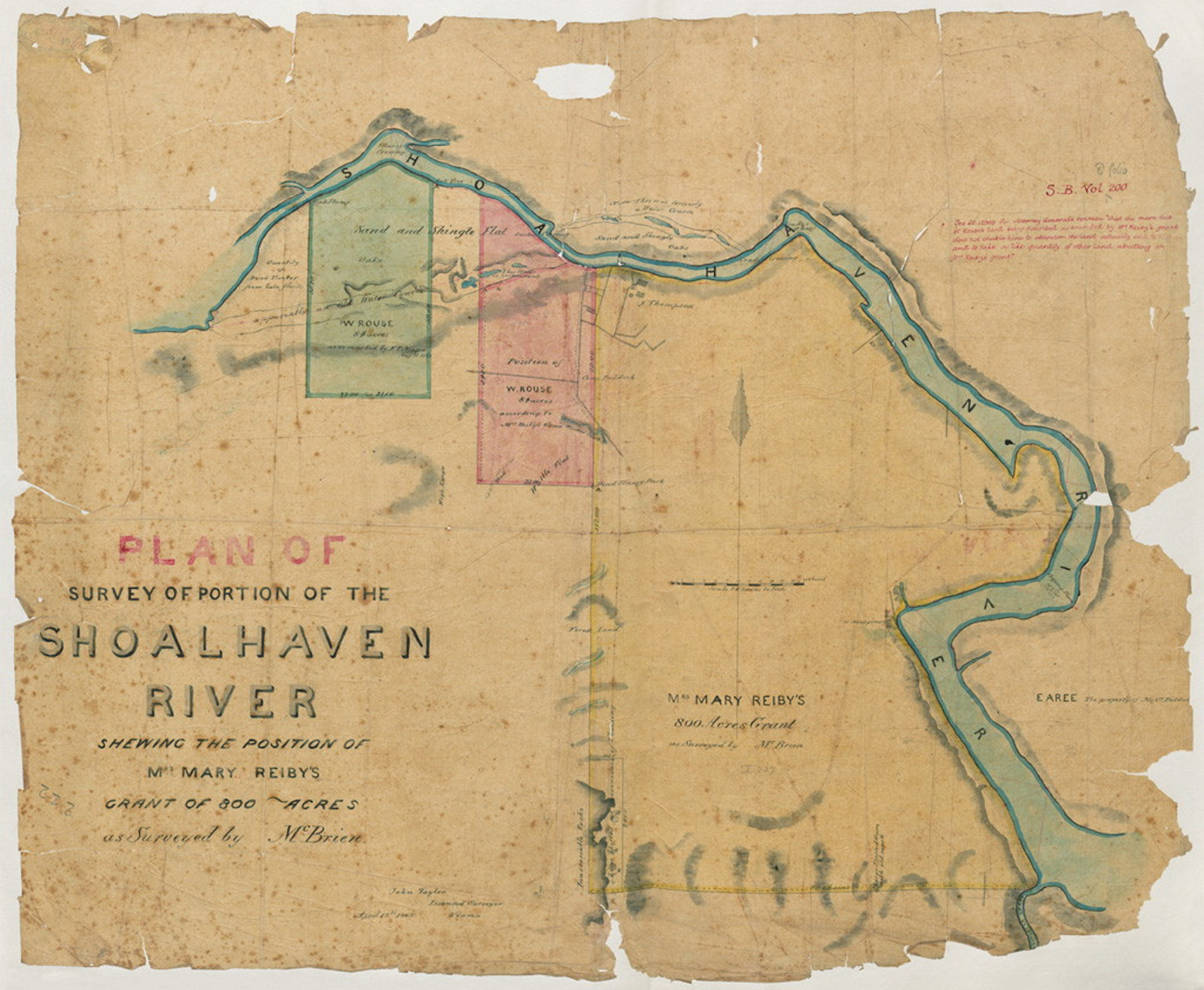
Local history guide
Resources in our collection to help local historians trace the history of a place
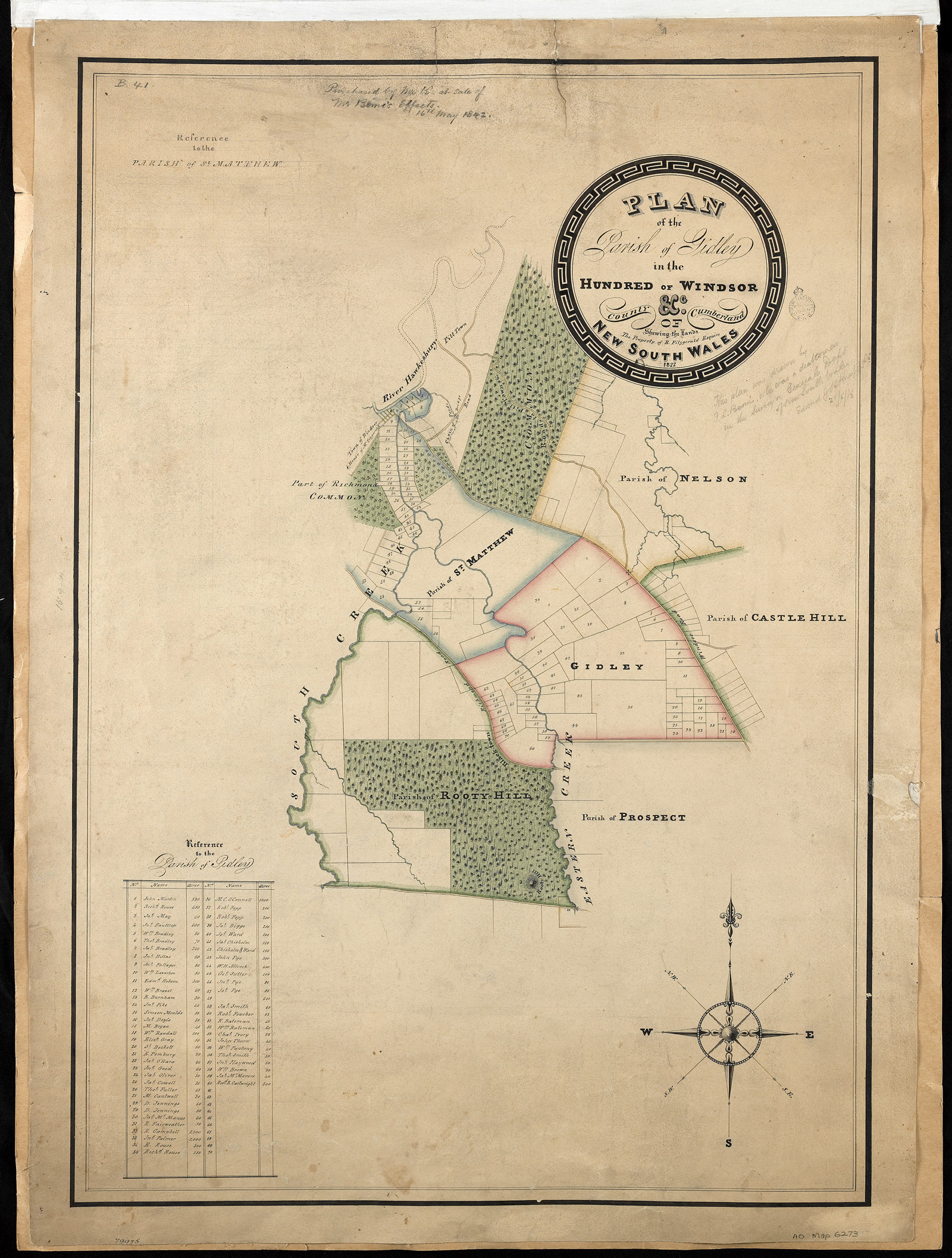
Surveyor General guide
These cartographic records provide detailed descriptions of the nature, agricultural potential & occupancy of land in the colony
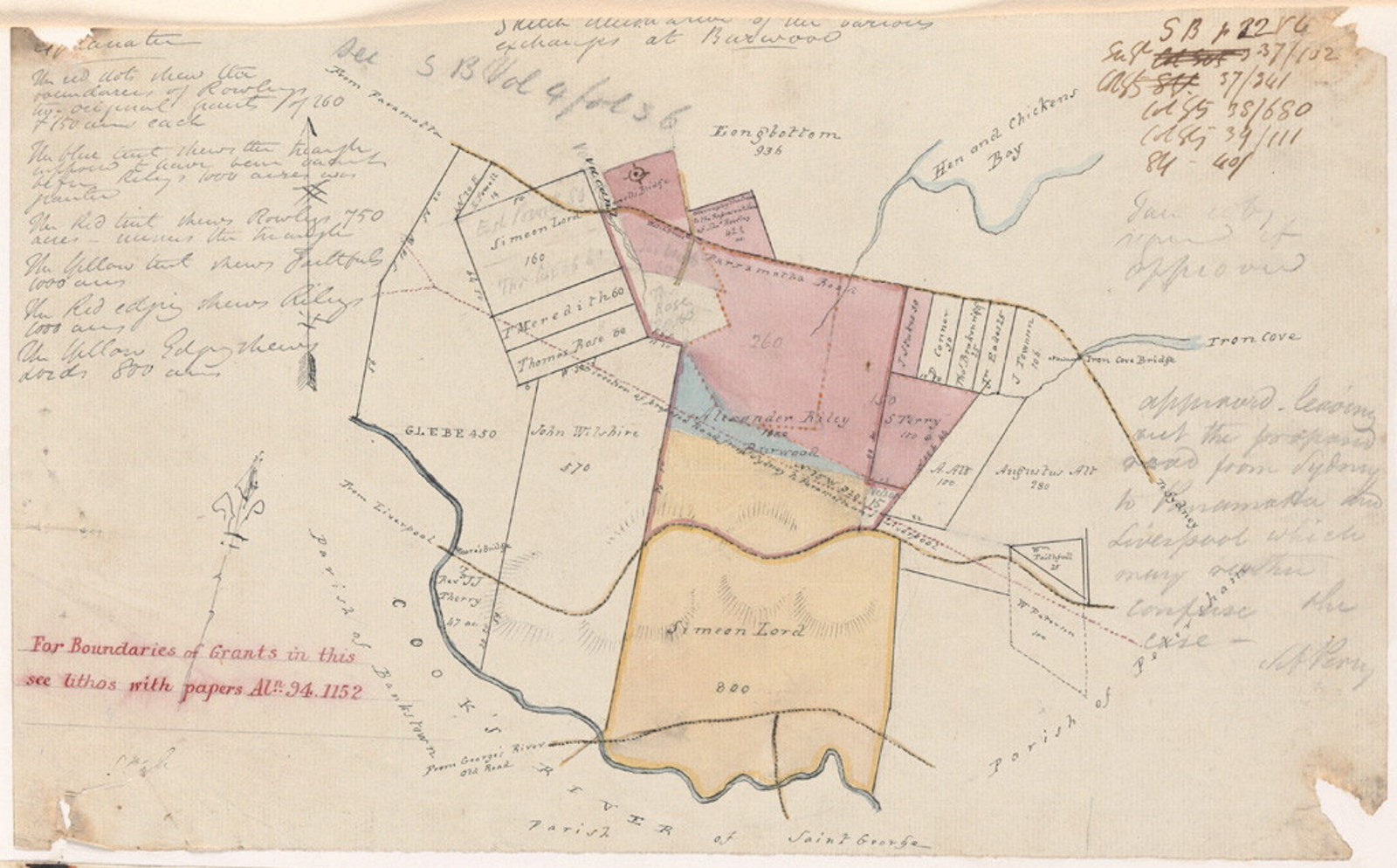
Land grants guide, 1788-1856
These records relate to the original alienation of land from the Crown. Parish maps are useful for research in this area, as they record original grants

